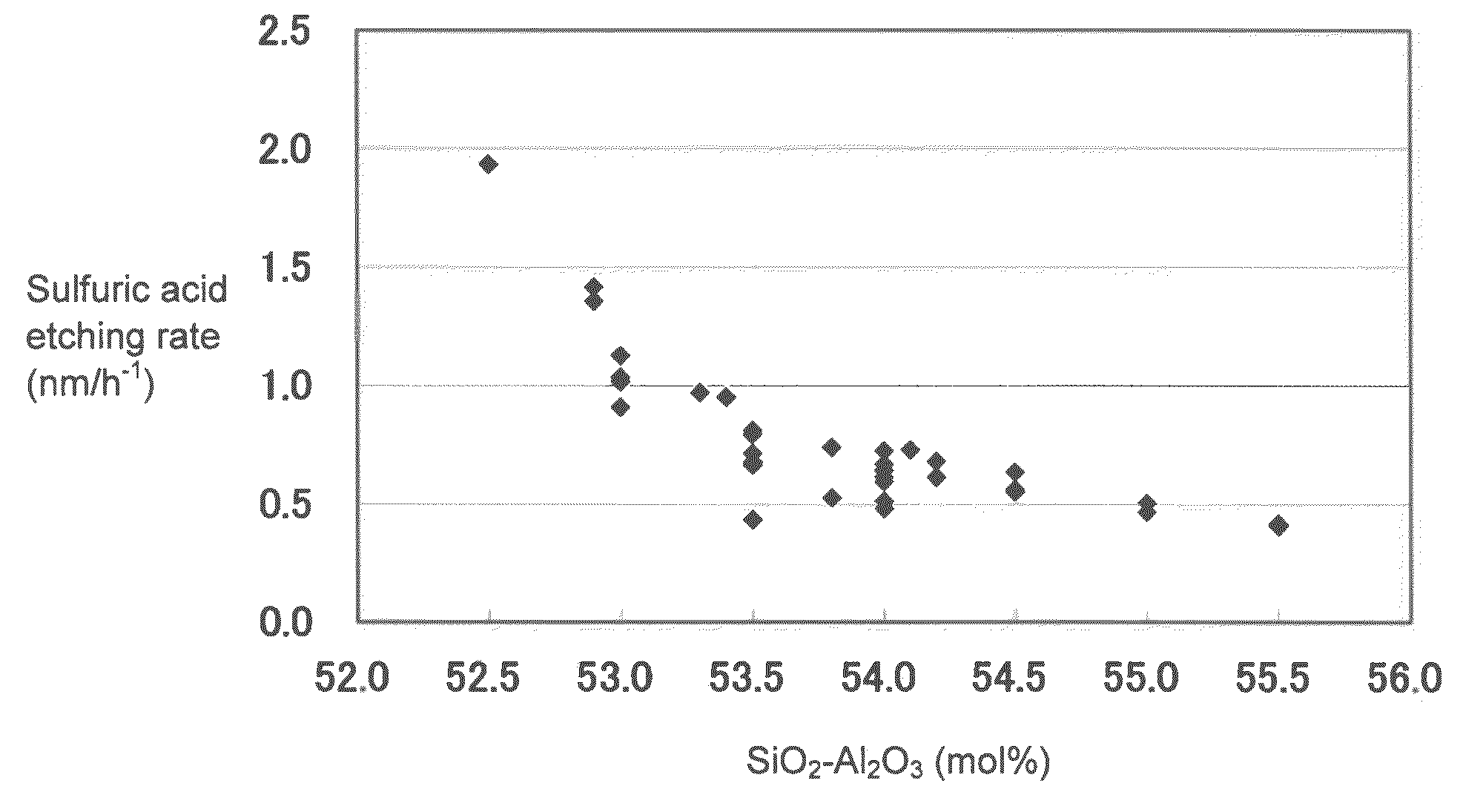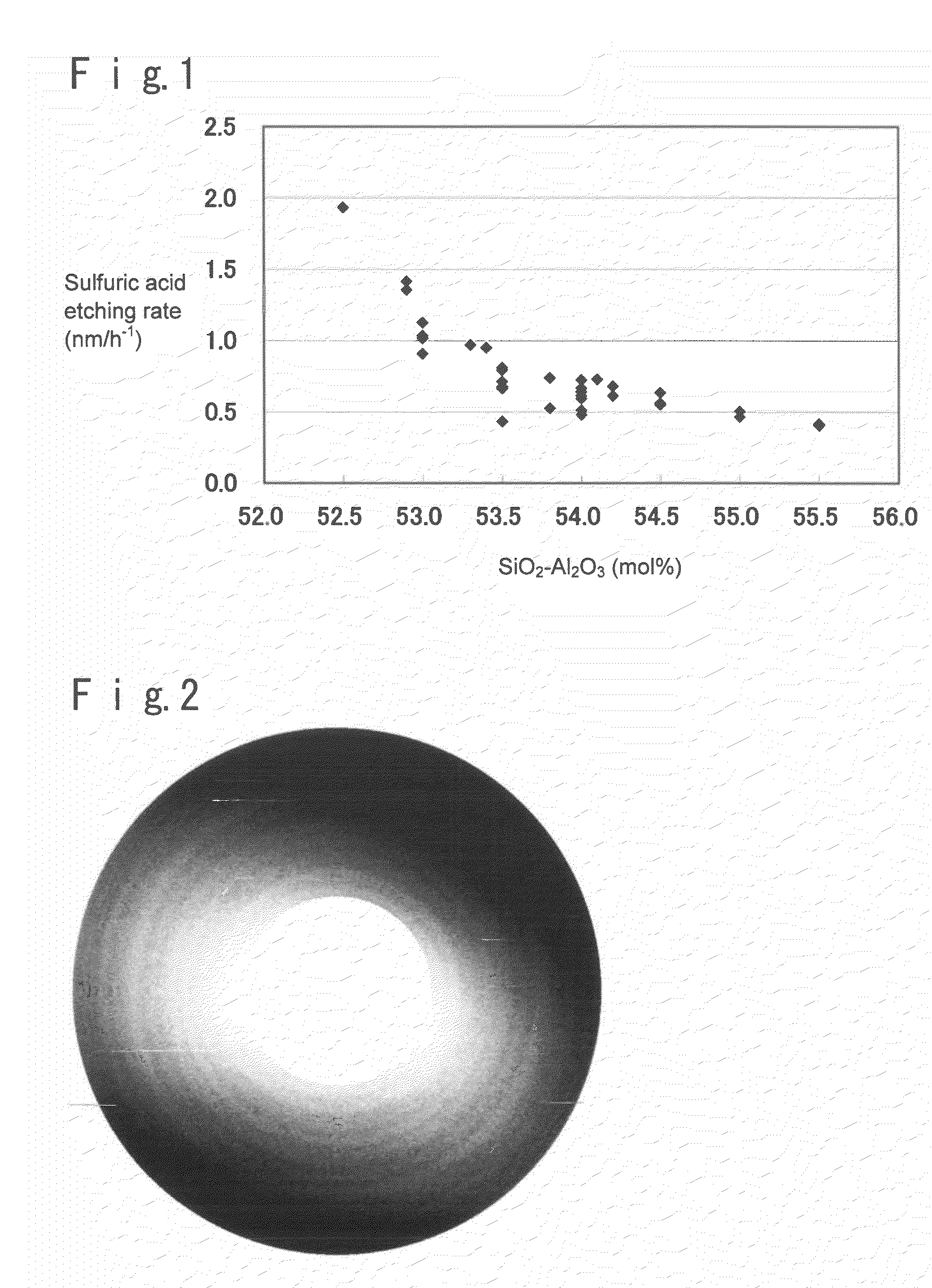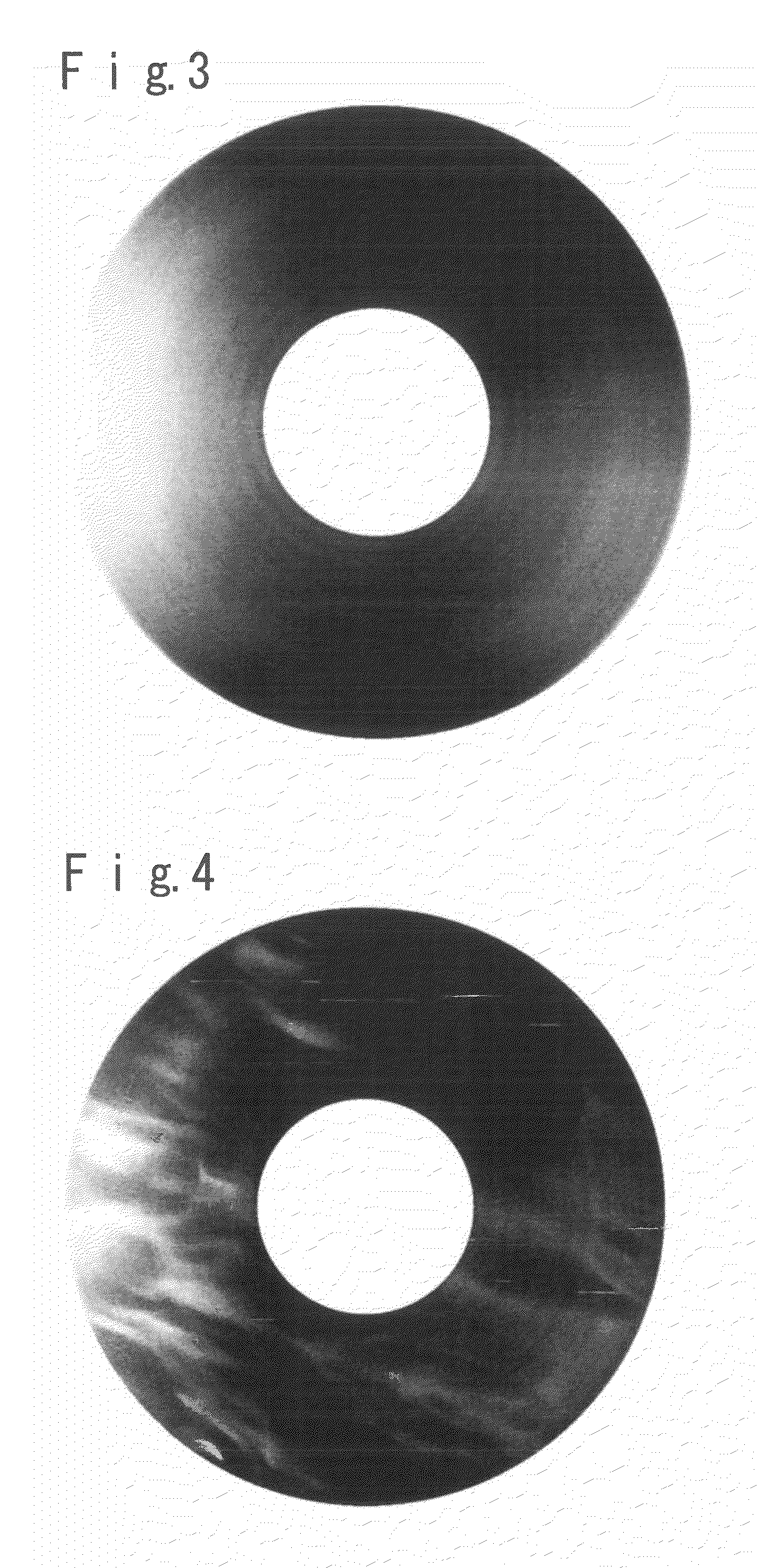Glass for substrate, and glass substrate
a technology of glass substrate and glass substrate, which is applied in the direction of magnetic materials for record carriers, instruments, record information storage, etc., can solve the problems of re-depositing on the main surface, and achieve the effects of excellent acid resistance, high quality, and efficient removal
- Summary
- Abstract
- Description
- Claims
- Application Information
AI Technical Summary
Benefits of technology
Problems solved by technology
Method used
Image
Examples
examples
[0068]With respect to glass in each of Examples 1 to 35 in Tables 1 to 4, materials for the respective components were blended to obtain a composition shown by mol % in the rows for from SiO2 to K2O in the Tables and melted at a temperature of from 1,550 to 1,600° C. for from 3 to 5 hours using a platinum crucible. In the melting, a platinum stirrer was put into the molten glass, and the glass was stirred for 2 hours to be homogenized. Then, the molten glass was cast to form a plate and annealed to room temperature at a cooling rate of 1° C. / min, and then, processed into a glass plate having a desired thickness. In the Tables, R2O represents the total of the respective contents (unit: mol %) of Li2O, Na2O and K2O, and Si—Al represents the difference (unit: mol %) in content between SiO2 and Al2O3.
[0069]With respect to glass in Example 36 having a composition shown by mol % in the rows for from SiO2 to K2O in Table 4, a glass plate having a thickness of about 0.6 mm was separately pr...
PUM
| Property | Measurement | Unit |
|---|---|---|
| Young's modulus | aaaaa | aaaaa |
| glass transition point Tg | aaaaa | aaaaa |
| glass transition point Tg | aaaaa | aaaaa |
Abstract
Description
Claims
Application Information
 Login to View More
Login to View More - R&D
- Intellectual Property
- Life Sciences
- Materials
- Tech Scout
- Unparalleled Data Quality
- Higher Quality Content
- 60% Fewer Hallucinations
Browse by: Latest US Patents, China's latest patents, Technical Efficacy Thesaurus, Application Domain, Technology Topic, Popular Technical Reports.
© 2025 PatSnap. All rights reserved.Legal|Privacy policy|Modern Slavery Act Transparency Statement|Sitemap|About US| Contact US: help@patsnap.com



